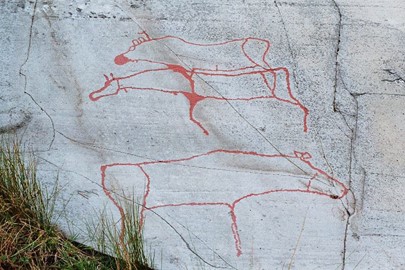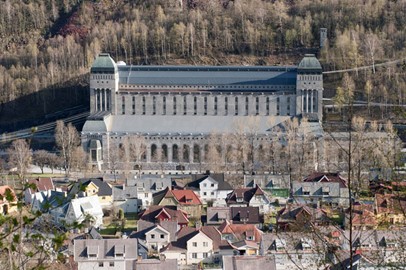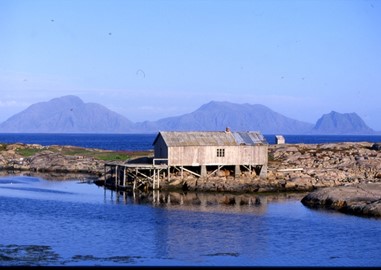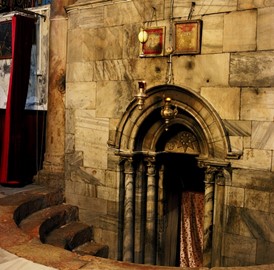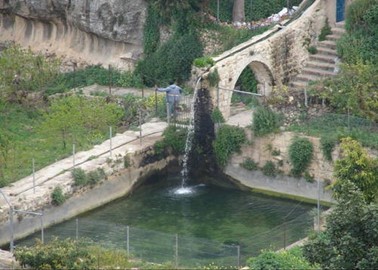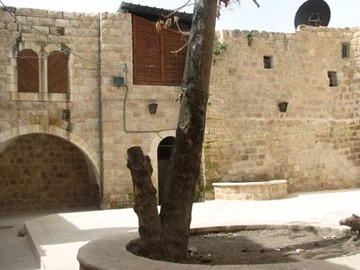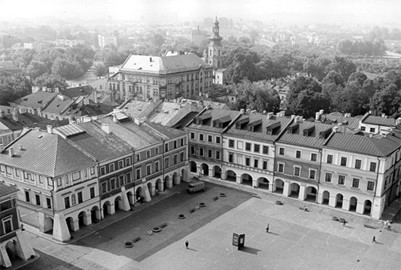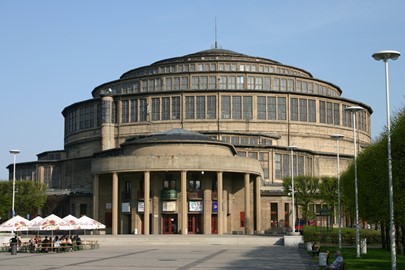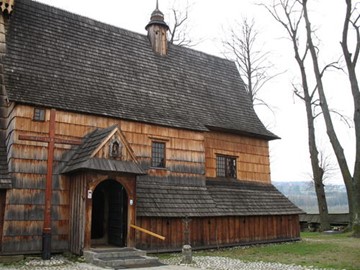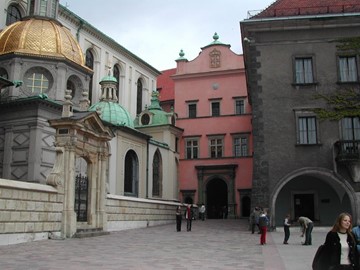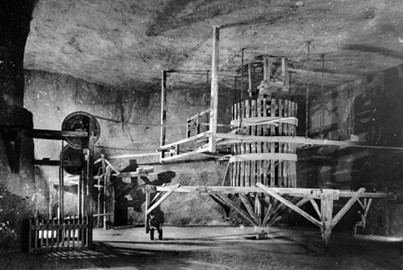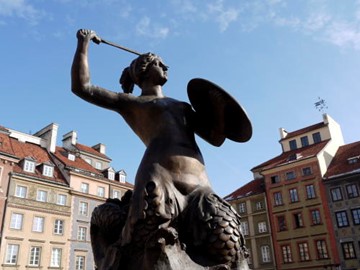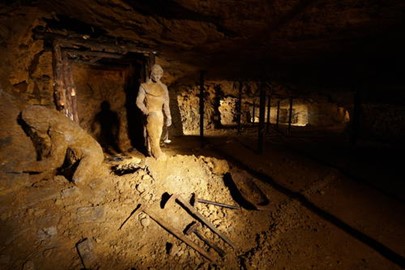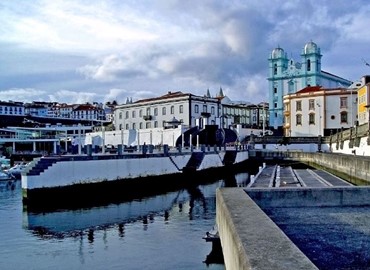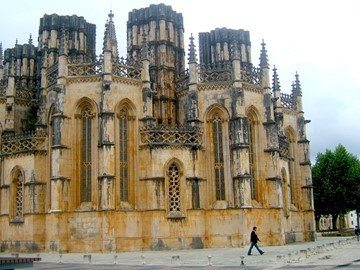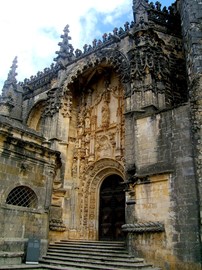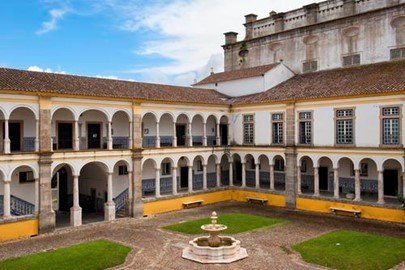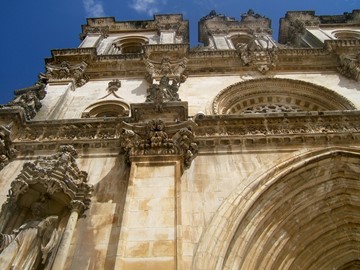region :: europe and north america
Rock Art of Alta
The Rock Art of Alta, a UNESCO World Heritage site in Norway, features thousands of prehistoric carvings and paintings dating back to 4200–500 BC. Created by hunter-gatherer communities, these artworks depict animals like reindeer, elk, and fish, as well as human figures engaged in hunting, fishing, and rituals. Discovered in the late 20th century, the site offers valuable insights into the daily life, beliefs, and environment of ancient societies. Its well-preserved state makes it a significant archaeologi... Read More
West Norwegian Fjords
The West Norwegian Fjords, a UNESCO World Heritage site, showcase stunning natural beauty with their steep, glacier-carved cliffs, deep blue waters, and cascading waterfalls. Formed over millions of years through glacial activity, these fjords exemplify Norway's dramatic landscape and geological history. They also support diverse ecosystems, including rare marine life and bird species, making them a significant natural treasure. This pristine environment attracts visitors worldwide for its scenic splendor a... Read More
Røros
Røros Mining Town and the Circumference, a UNESCO World Heritage site in Norway, is a well-preserved historic mining town founded in 1646. Known for its copper mining heritage, the town features charming wooden architecture, including colorful 17th- and 18th-century buildings, and a prominent church that dominates the skyline. Its unique cultural and industrial history, shaped by centuries of mining activity, earned it a place on the World Heritage list in 1980. Today, Røros stands as a living museum, offer... Read More
Rjukan Notodden
Rjukan-Notodden, a UNESCO World Heritage site in Norway, is an outstanding example of early 20th-century industrial heritage. This site showcases a well-preserved complex of hydroelectric power plants, factories, and worker settlements, illustrating the innovative use of waterpower to produce fertilizers and heavy water. The area's historical significance lies in its pioneering role in the global chemical industry and its contribution to Norway's industrial development, all set against a dramatic natural la... Read More
Vegaøyan
Vegaøyan – The Vega Archipelago is a UNESCO World Heritage site in Norway, recognized for its unique cultural landscape shaped by generations of fishermen and farmers. Located near the Arctic Circle, it showcases a sustainable way of life based on fishing and the traditional harvesting of eider duck down, a practice dating back over 1,500 years. The site features fishing villages, quays, eider houses, and lighthouses, reflecting human resilience in a harsh environment and the significant role of women in th... Read More
Bethlehem
Bethlehem, a UNESCO World Heritage site in Israel, is renowned as the birthplace of Jesus Christ, making it a significant religious and historical landmark. The city is home to the Church of the Nativity, a 4th-century basilica built over the traditional site of Jesus’ birth, which attracts pilgrims and tourists worldwide. Its well-preserved ancient architecture, including monasteries and bell towers, reflects its rich cultural heritage. Bethlehem’s historical importance and sacred sites have cemented its s... Read More
Battir
Battir, a UNESCO World Heritage site in Israel, is a village renowned for its ancient agricultural terraces and Roman-era irrigation system. Located southwest of Jerusalem, it features a stunning landscape of stone terraces, olive groves, and vineyards, sustained by a traditional water distribution network still maintained by local families. Inscribed in 2014, Battir exemplifies thousands of years of human ingenuity and cultural heritage, earning its status as a globally significant site.
Hebron
Hebron, a World Heritage site in Israel, is an ancient city located in the Judean Hills, renowned for its historical and cultural significance. It is home to the Cave of the Patriarchs, a revered burial site traditionally associated with biblical figures such as Abraham, Isaac, and Jacob, making it a key location in Jewish and Christian heritage. The city's old town features well-preserved architecture, including stone houses and narrow streets, reflecting its long history dating back over 3,000 years. Hebr... Read More
Auschwitz Birkenau
Auschwitz-Birkenau, a UNESCO World Heritage site in Poland, served as a Nazi concentration and extermination camp during World War II, where over 1.1 million people, primarily Jews, were systematically murdered between 1940 and 1945. Established by the Germans, it became a central symbol of the Holocaust, featuring gas chambers, crematoria, and barracks that stand as a somber testament to the atrocities committed. Today, it functions as a memorial and museum, preserving the history of the victims and educat... Read More
Zamosc
The Old City of Zamość, a UNESCO World Heritage site in Poland, is a remarkably well-preserved example of a Renaissance planned town. Founded in 1580 by Chancellor Jan Zamoyski and designed by Italian architect Bernardo Morando, it features a harmonious layout with a central market square, elegant townhouses, and fortified walls reflecting its historical role as a trading and defensive hub. Its unique blend of Polish and Italian architectural styles, including the striking Zamość Cathedral and the grand Zam... Read More
Torun
The Medieval Town of Toruń, a UNESCO World Heritage site in Poland, is renowned for its exceptionally well-preserved historic architecture. This charming town showcases an impressive collection of Gothic buildings, including brick churches, townhouses, and the iconic Toruń Cathedral, reflecting its prosperity as a major trading center during the Middle Ages. Its unique urban layout, largely unchanged since the 13th century, offers a glimpse into medieval European life, with landmarks like the Copernicus Hou... Read More
Malbork Castle
Malbork Castle, a UNESCO World Heritage site in Poland, is a striking example of medieval architecture and one of the largest brick castles in the world. Constructed in the 13th century by the Teutonic Knights, it served as their headquarters and a symbol of their power. The castle features impressive Gothic design, including fortified walls, towers, and a vast courtyard, reflecting its historical role as both a military stronghold and administrative center. Today, it stands as a well-preserved monument, of... Read More
Kalwaria Zebrzydowska
Kalwaria Zebrzydowska, a UNESCO World Heritage Site in Poland, is a remarkable 17th-century Mannerist architectural and park landscape complex designed as a pilgrimage park. Founded by Mikołaj Zebrzydowski, it features a Baroque basilica, a Bernardine monastery, and 42 chapels scattered across a scenic landscape, symbolizing the Passion of Jesus Christ and the life of the Virgin Mary. Recognized in 1999 for its cultural and spiritual significance, it remains a vital pilgrimage destination, blending natural ... Read More
Churches of Peace
The Churches of Peace in Jawor and Świdnica, recognized as a UNESCO World Heritage site, are remarkable wooden structures built in the 17th century by the Protestant community under restrictive conditions imposed by the Holy Roman Emperor following the Thirty Years' War. Constructed entirely of wood, clay, and straw without the use of nails, these Baroque-style churches showcase exceptional architectural ingenuity and artistic detail, including intricate interior paintings and ornate altars. They stand as e... Read More
Centennial Hall in Wroclaw
Centennial Hall in Wrocław, Poland, is an iconic World Heritage site renowned for its pioneering reinforced concrete design, completed in 1913 by architect Max Berg. Originally built as an exhibition hall to commemorate the centennial of the Battle of Leipzig, it features a distinctive symmetrical structure with a vast central dome, showcasing early 20th-century engineering innovation. Today, it serves as a multifunctional venue for cultural and sporting events, reflecting its enduring historical and archit... Read More
Wooden Churches of Southern Malopolska
The Wooden Churches of Southern Małopolska, a UNESCO World Heritage site in Poland, are a remarkable collection of medieval Roman Catholic churches built using the horizontal log technique, a method prevalent in Northern and Eastern Europe during the Middle Ages. Constructed between the 14th and 16th centuries, these Gothic-style churches feature intricate polychrome interiors and unique architectural designs, reflecting the craftsmanship and cultural heritage of the region. Sponsored by noble families as s... Read More
Kraków
The Historic Centre of Kraków, a UNESCO World Heritage site in Poland, is renowned for its well-preserved medieval architecture and rich cultural history. This vibrant area features landmarks like the Wawel Castle, a former royal residence, and the Main Market Square, one of Europe’s largest medieval squares, surrounded by colorful townhouses and the iconic St. Mary’s Basilica. The site also includes the historic Jewish quarter of Kazimierz, reflecting centuries of cultural diversity. Its significance lies ... Read More
Wieliczka and Bochnia Salt Mines
The Wieliczka and Bochnia Royal Salt Mines, a UNESCO World Heritage site in Poland, are historic underground complexes renowned for their centuries-long salt extraction history dating back to the 13th century. These mines feature an intricate network of tunnels, chambers, and saline lakes, adorned with remarkable salt-carved sculptures, chapels, and artworks created by miners over generations. They stand as a testament to human ingenuity and industrial heritage, offering a unique glimpse into medieval minin... Read More
Warsaw
The Historic Centre of Warsaw, a UNESCO World Heritage site in Poland, is a remarkable example of a meticulously reconstructed urban area, reflecting its resilience after near-total destruction during World War II. This vibrant district showcases a blend of architectural styles, including Gothic, Renaissance, and Baroque, with key landmarks like the Royal Castle and St. John’s Cathedral highlighting its rich history. Recognized for its cultural and historical significance, it stands as a testament to human ... Read More
Tarnowskie Góry Mine
The Tarnowskie Góry Mine, a UNESCO World Heritage site in Poland, is a historic underground complex renowned for its well-preserved silver, lead, and zinc mining infrastructure dating back to the 16th century. This extensive network of tunnels, chambers, and drainage systems showcases innovative engineering from the Renaissance and Industrial eras, highlighting the region’s significant contribution to global mining technology. Visitors can explore its unique subterranean landscape, which includes the remark... Read More
Angra do Heroismo
Angra do Heroísmo, located on Terceira Island in the Azores, Portugal, is a UNESCO World Heritage site renowned for its well-preserved Renaissance urban layout and historical significance. Established in the 15th century, it served as a vital maritime hub during the Age of Sail, connecting Europe, Africa, and the Americas. The town features notable architecture, including the São João Baptista Fort and the Sé Cathedral, reflecting its strategic and cultural importance. Its enduring charm lies in its colorfu... Read More
Monastery of Batalha
The Monastery of Batalha, a UNESCO World Heritage site in Portugal, is a stunning example of Gothic architecture blended with Manueline style, constructed in the late 14th century to commemorate a historic military victory. Its intricate stonework, including the Founder's Chapel and the Unfinished Chapels, showcases exceptional craftsmanship and historical significance. The monastery also served as a royal pantheon, housing the tombs of Portuguese kings and nobility. Today, it stands as a well-preserved tes... Read More
Convent of Christ in Tomar
The Convent of Christ in Tomar, a UNESCO World Heritage site in Portugal, is a historic monument renowned for its architectural evolution and cultural significance. Originally founded as a Templar stronghold in the 12th century, it later became the headquarters of the Order of Christ, reflecting a blend of Romanesque, Gothic, Manueline, and Renaissance styles. Its iconic Charola, a 16-sided Templar church, and the intricate Manueline window are standout features, showcasing centuries of Portuguese history a... Read More
Évora
The Historic Centre of Évora, a UNESCO World Heritage site in Portugal, is a well-preserved medieval city showcasing a rich blend of Roman, Gothic, and Baroque architecture. Its notable landmarks include the Roman Temple, the Gothic Cathedral of Évora, and the eerie Chapel of Bones, constructed with human skulls and bones. The city's unique historical and cultural significance, reflecting centuries of Portuguese heritage, makes it a remarkable testament to the region's past.
Monastery of Alcobaça
The Monastery of Alcobaça, a UNESCO World Heritage site in Portugal, is a remarkable example of medieval Cistercian architecture, founded in 1153 by King Afonso Henriques. Its Gothic church, one of the largest of its kind, features intricate stonework and a serene cloister, reflecting the order’s emphasis on simplicity and spirituality. The monastery also houses the tombs of King Pedro I and Inês de Castro, tied to a tragic royal love story that adds historical intrigue. Today, it stands as a well-preserved... Read More
